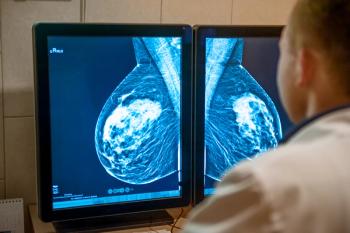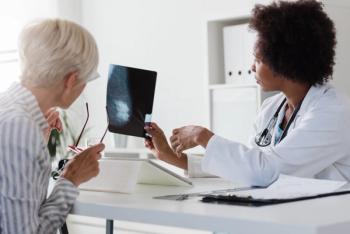
How many deaths have been averted with breast cancer screening?
A recent study aimed to quantify the effectiveness of improvements in screening and treatment.
Since 1990, breast cancer mortality rates have steadily fallen – a reduction that has been primarily attributed to increased screening mammography and improved breast cancer treatment. A recent
Using data from the Surveillance, Epidemiology and End Results (SEER) program, the authors analyzed breast cancer mortality data and female population data over the past 30 years for US women aged 40 to 84. Breast cancer deaths averted in a given year for each 5-year age group were determined by taking the difference between background mortality rates and measured rates for the years between 1990 and 2015.
Death rates from breast cancer fell on average 1.8% each year from 2006 to 2015. For this study, the authors estimated what the numbers would have been under four other, hypothetical scenarios: 1) no change in rates since 1989; 2) a continued steady increase in deaths of 0.4% per year after 1989, similar to the actual trend observed from 1975 to 1990; 3) estimation of rates after 1989 for each 5-year age group using the change in mortality rates for that age group prior to 1990; and 4) a 0.94% increase in background mortality rate per year since 1989. Extrapolated SEER data were used to estimate deaths averted in 2018.
The authors estimated that the number of single-year breast cancer deaths averted ranged from 20,860 (scenario 1) to 33,842 (scenario 4) in 2012, from 23,703 (scenario 1) to 39,415 (scenario 4) in 2015, and from 27,083 (scenario 1) to 45,726 (scenario 4) in 2018. As for cumulative breast cancer deaths averted, estimates ranged from 237,234 to 370,402 for 1990-2012; 305,934 to 483,435 for 1990-2015; and from 384,046 to 614,484 for 1990-2018.
Based on their findings, the authors believe that the best estimates for averted deaths are ones that account for background mortality rate increases. Therefore, they concluded that more over than 500,000 breast cancer deaths have been averted by screening mammography and improved treatment.
One noted limitation to this study is that SEER breast cancer incidence data do not specify whether a woman attended mammography screening within 1 year of her breast cancer diagnosis. Another is that the estimates were for the number of breast cancer deaths averted and percentage mortality reduction since 1989 – not the full number of breast cancer deaths averted by screening mammography and treatment. However, the authors believe that their findings illustrate the importance and value of encouraging women to schedule breast cancer screenings and the need to continue to improve treatments for the disease.
Newsletter
Get the latest clinical updates, case studies, and expert commentary in obstetric and gynecologic care. Sign up now to stay informed.











